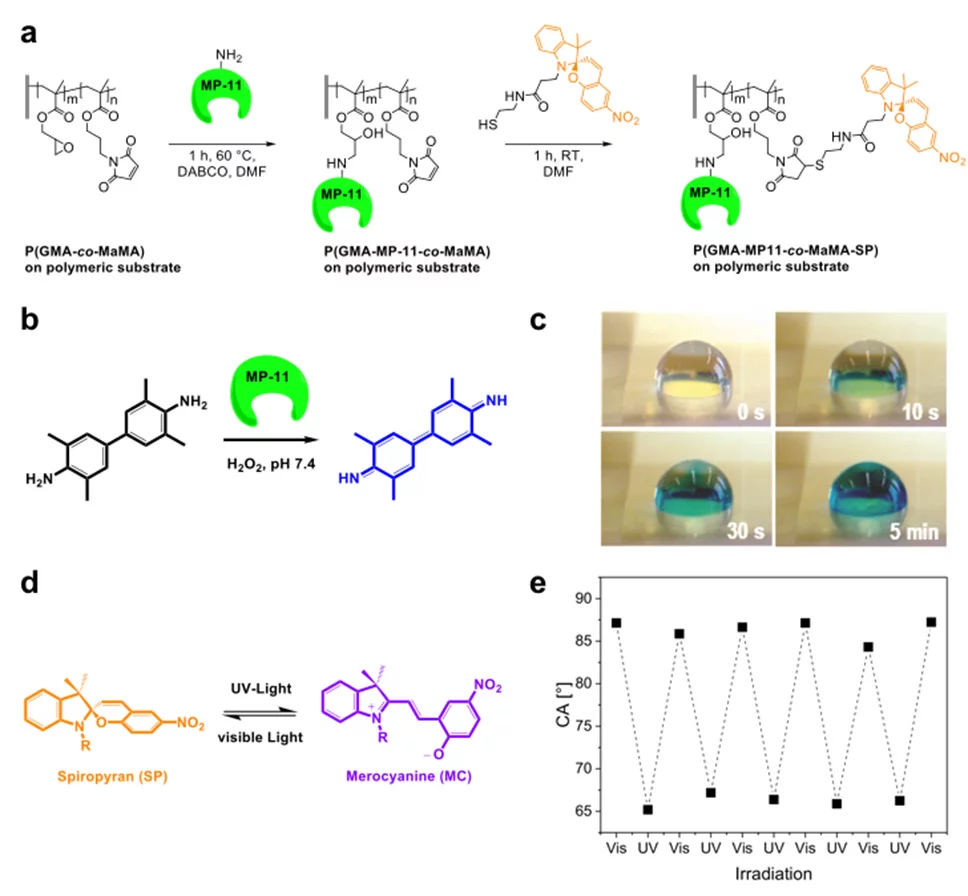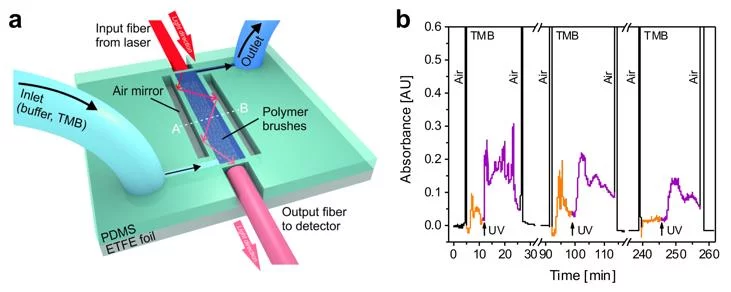UV- and visible light-induced switching of enzymatic activity has been demonstrated using surface-grafted polymer brushes functionalized with microperoxidase MP-11 and spiropyran mojeties. The modified samples were integrated into an optofluidic device that allowed the reversible switching of the enzymatic activity for several cycles under flow, validating the potential for application in smart lab-on-a-chip systems.
Copolymer brushes, composed of glycidyl methacrylate and a furan-protected maleimide-containing monomer, were grafted from radical initiators at the surface of irradiation-activated fluoropolymer foils. After post-polymerization modification with enzymatically active microperoxidase-11 and photochromic spiropyran moieties, the polymer brushes catalyzed the oxidation of 3,3’5,5’-tetramethylbenzidine. Exposure to either UV or visible light allowed switching the turn-over by more than one order of magnitude, as consequence of the reversible, light-induced spiropyran-merocyanine transition.
The results were published in
ACS Applied Materials and Interfaces, 2017, 9 (11), pp 9245-9249.
Matthias Dübner, Victor J. Cadarso, Tugce N. Gevrek, Amitav Sanyal, Nicholas D. Spencer, and Celestino Padeste
Reversible Light-Switching of Enzymatic Activity on Orthogonally Functionalized Polymer Brushes
ACS Appl. Mater. Interfaces, 2017, 9 (11), pp 9245-9249, 10.1021/acsami.7b01154



